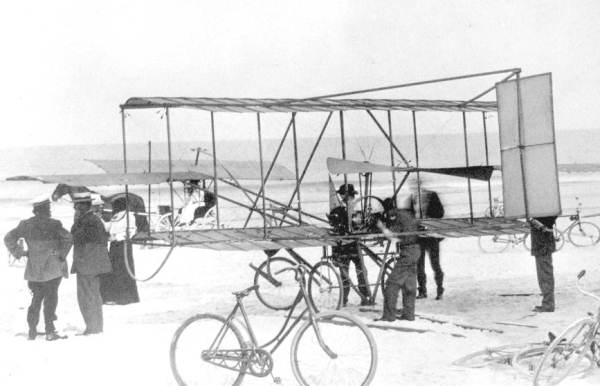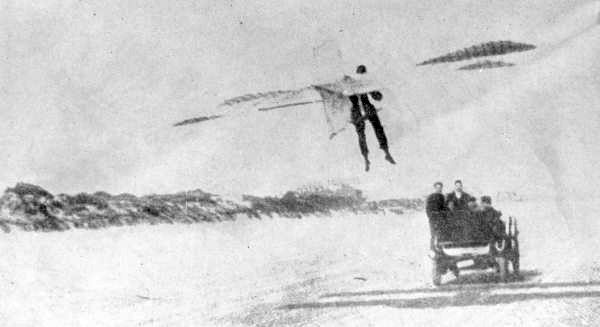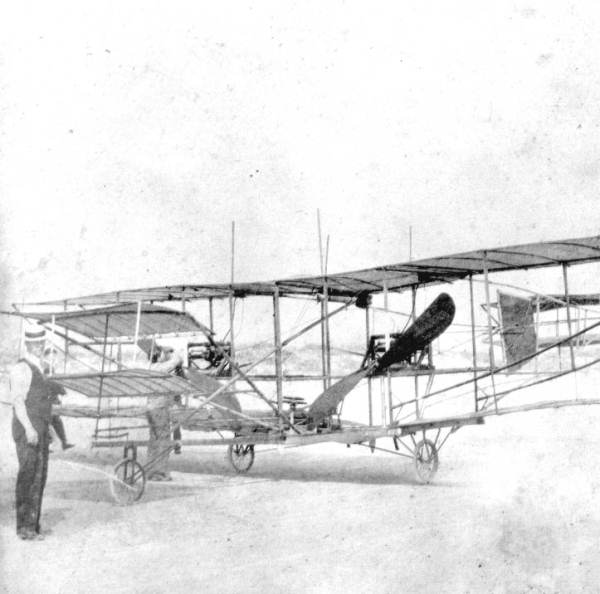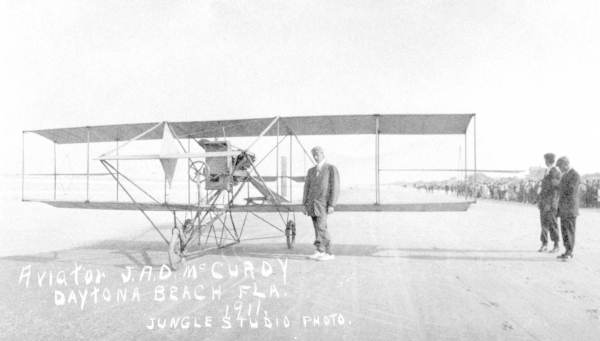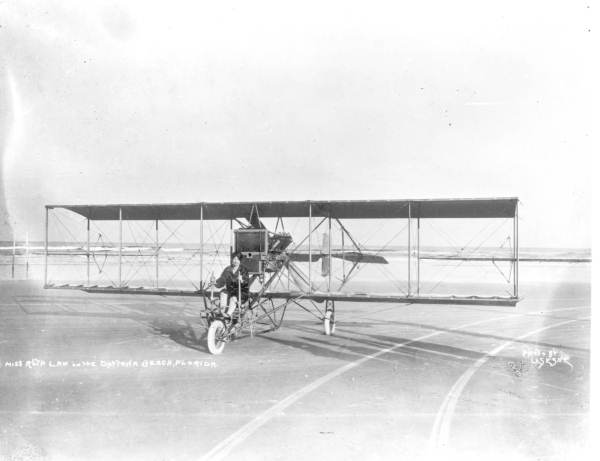Description of previous item
Description of next item
Daytona Beach and the Earliest Days of Aviation in Florida
Published December 12, 2014 by Florida Memory
Daytona Beach is perfect for sunbathing and swimming, but there’s no telling how many visitors have spent a day there without realizing they were enjoying themselves on one of Florida’s very first runways. Auto racing was already a popular sport at Daytona by the time the Wright brothers made their first successful flight in 1903. The hard sand surface of the upper beach was a perfect natural track for the light, speedy cars being developed by racing enthusiasts. Airplanes were an easy addition to the mix of experimental machines, since the motors in the earliest planes incorporated much of the same technology as automobiles. The result was an age when Daytona Beach served not only as one of the nation’s first racetracks, but also a natural airport.
As enthusiasm for aviation spread quickly in the 1900s, more and more pilots and their experimental flying machines began appearing on the sand at Daytona. In 1906, New York aviator Israel Ludlow arrived at the auto races in Daytona and Ormond beaches to execute a test flight with a glider contraption he had designed. Charles K. Hamilton, who would go on to become the twelfth person to earn an American pilot’s license, flew the device. Hamilton gripped a tow rope tied to an automobile that pulled his aircraft along the beach by driving quickly across the sand. Once Hamilton left the ground, he released the tow rope and glided, shifting his body weight left and right to steer. The glider flew for about 150 feet before one of the wing ribs broke, sending it crashing to the ground. The glider was seriously damaged, but Hamilton survived.
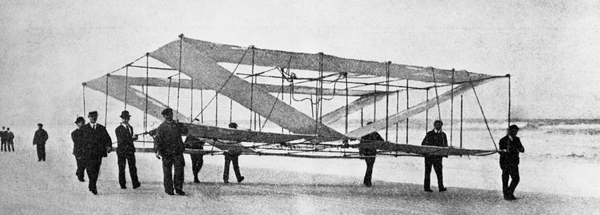
Preparing for Florida’s first glider flight at Ormond Beach near Daytona. Charles Hamilton would soon fly this glider into the air over Florida’s Atlantic coast (1906).
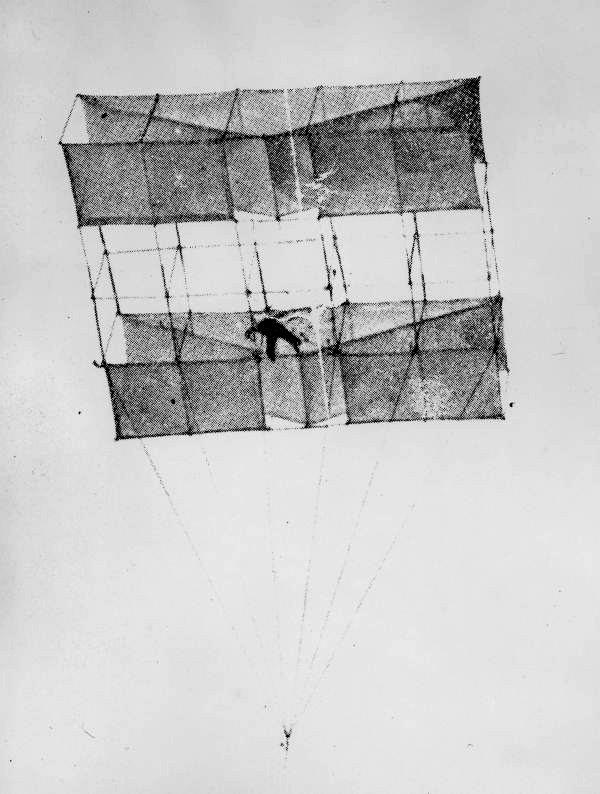
Charles K. Hamilton flying a glider designed and constructed by Israel Ludlow of New York over Ormond and Daytona beaches (1906).
Daytona became a popular testing site for all kinds of aviation innovations. In 1910, Edward Andrews of Chicago flew the first twin-engine plane ever built from Daytona Beach. It flew for about 100 feet at an altitude of only 6 feet before breaking apart. Interestingly, Andrews later decided to temporarily buck the flight mechanization trend and develop a gliding apparatus worn on the arms. In 1911, he attached wings of wood and cloth to his arms and shoulders and had a car pull him along the beach until he took flight. The voyage was successful, but afterward Andrews had this to say:
“I have found this to be dangerous. A machine, which if free would be perfectly safe, is made as erratic as a child’s kite by the attachment of a rope. I, for one, shall seek other means of getting into the air.”
The daring and edgy spirit of Daytona attracted a large number of aviation exhibitionists. John McCurdy, Canada’s first licensed pilot, pioneer aviatrix Ruth Law, and future million-mile commercial pilot Ervie Ballough were all among the throng of eager aviators who flew up and down the sandy coast in the 1910s and 1920s.
Over time, the number of planes and people visiting Daytona Beach necessitated regulations to ensure public safety. At first, Daytona’s city government determined the best method was to restrict landings and take-offs to the beach and keep them away from town. Once airstrips appeared at Bethune Point and farther inland in the 1920s, the beach was no longer deemed the safest place for these activities. In the 1930s, the city passed an ordinance prohibiting the use of the beach as an airstrip.
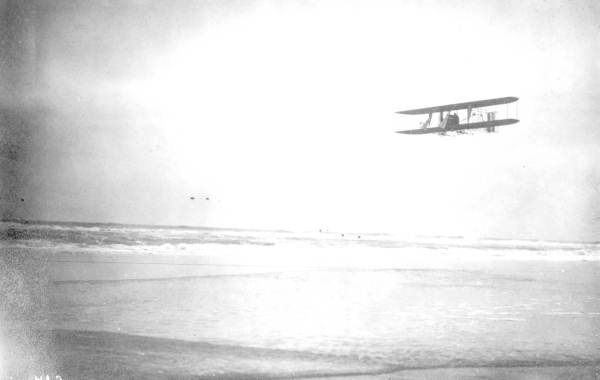
Burgess-Wright biplane flying over Daytona Beach. The pilot, Phillips Ward Page of Massachusetts, was hired to fly guests of the Clarendon Hotel over the beach as a novelty (1912).
Daytona was one of the most popular spots for early aviation experiments in Florida, but there were certainly others. Search the Florida Photographic Collection for more images depicting early aviation in the Sunshine State!
Cite This Article
Chicago Manual of Style
(17th Edition)Florida Memory. "Daytona Beach and the Earliest Days of Aviation in Florida." Floridiana, 2014. https://www.floridamemory.com/items/show/295239.
MLA
(9th Edition)Florida Memory. "Daytona Beach and the Earliest Days of Aviation in Florida." Floridiana, 2014, https://www.floridamemory.com/items/show/295239. Accessed December 16, 2025.
APA
(7th Edition)Florida Memory. (2014, December 12). Daytona Beach and the Earliest Days of Aviation in Florida. Floridiana. Retrieved from https://www.floridamemory.com/items/show/295239

 Listen: The Blues Program
Listen: The Blues Program